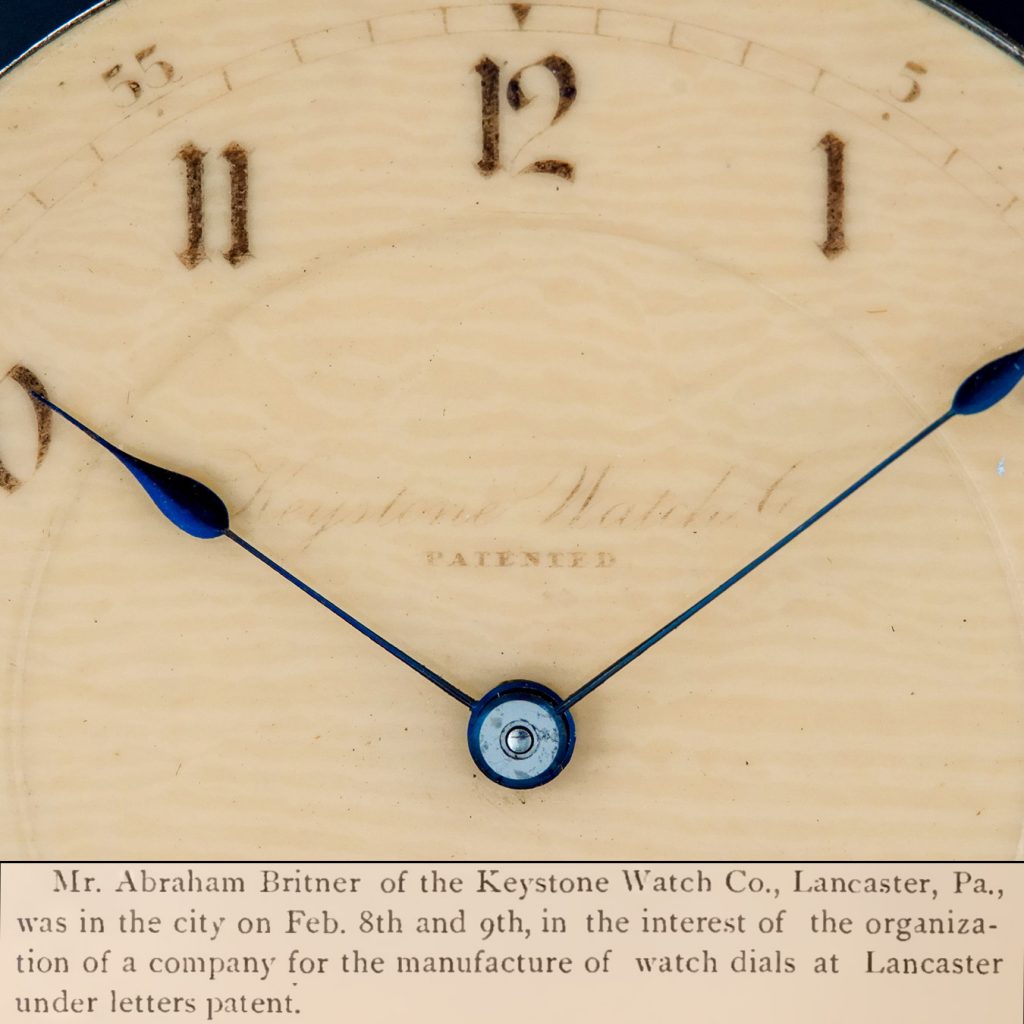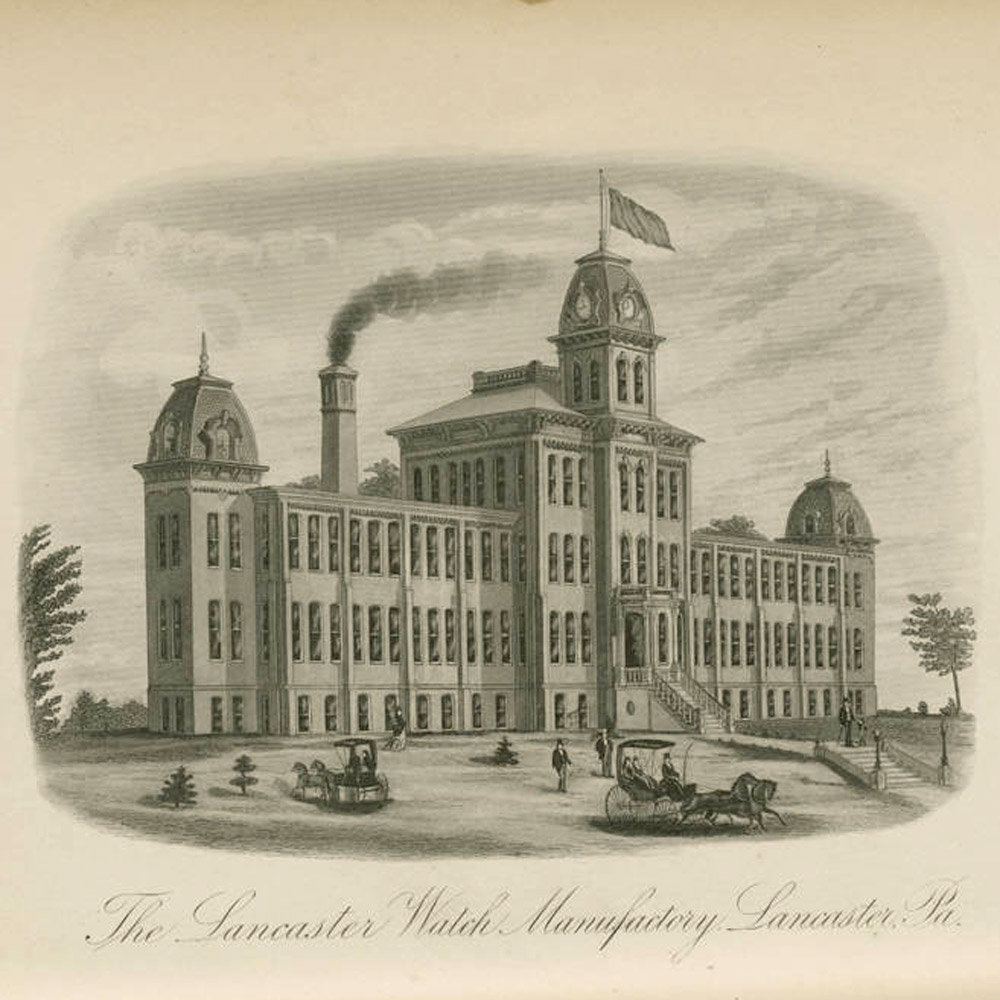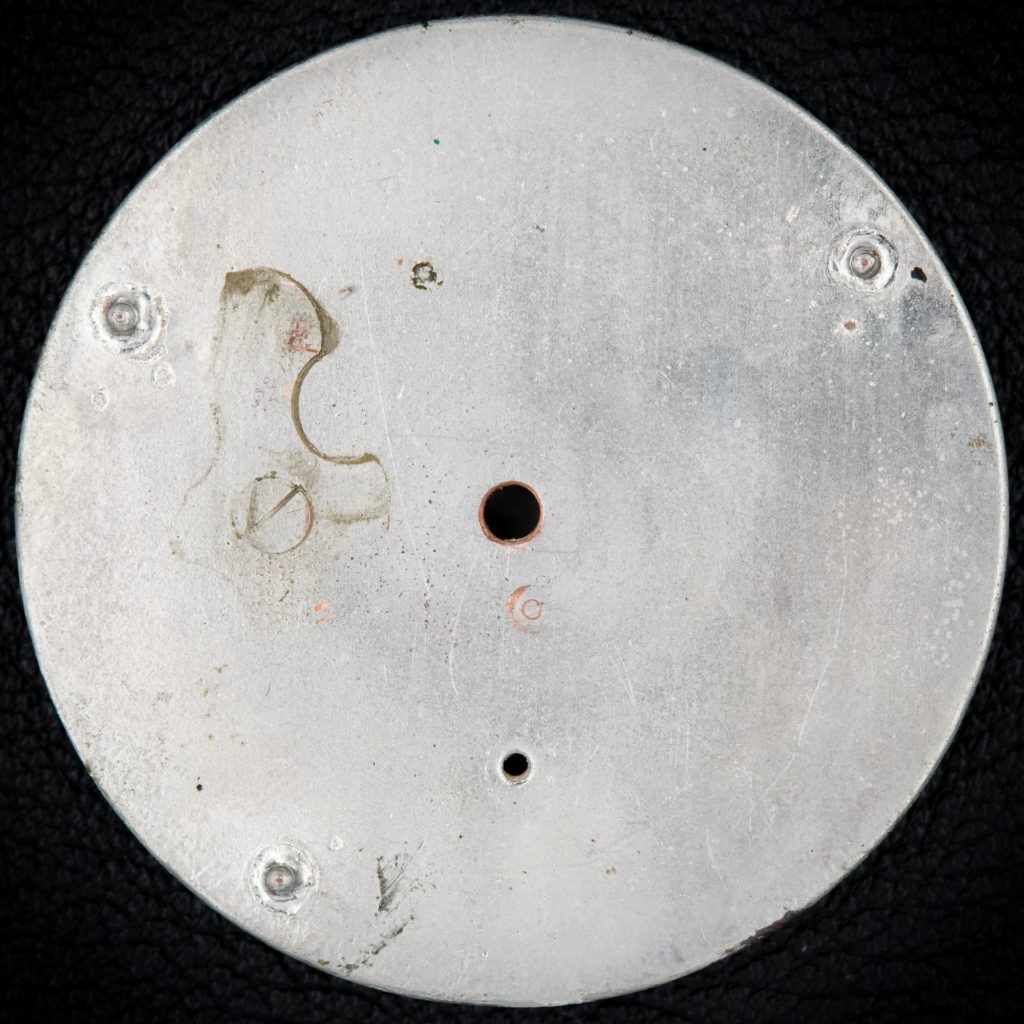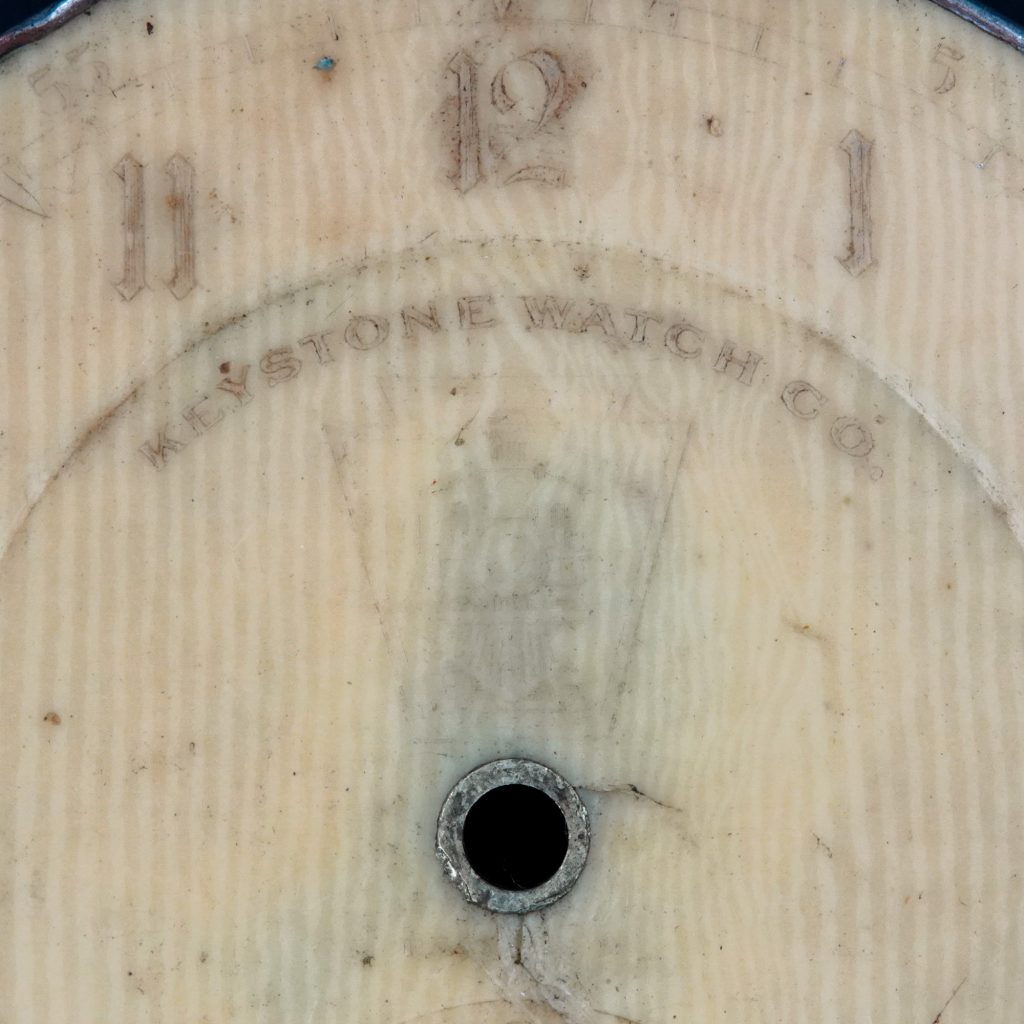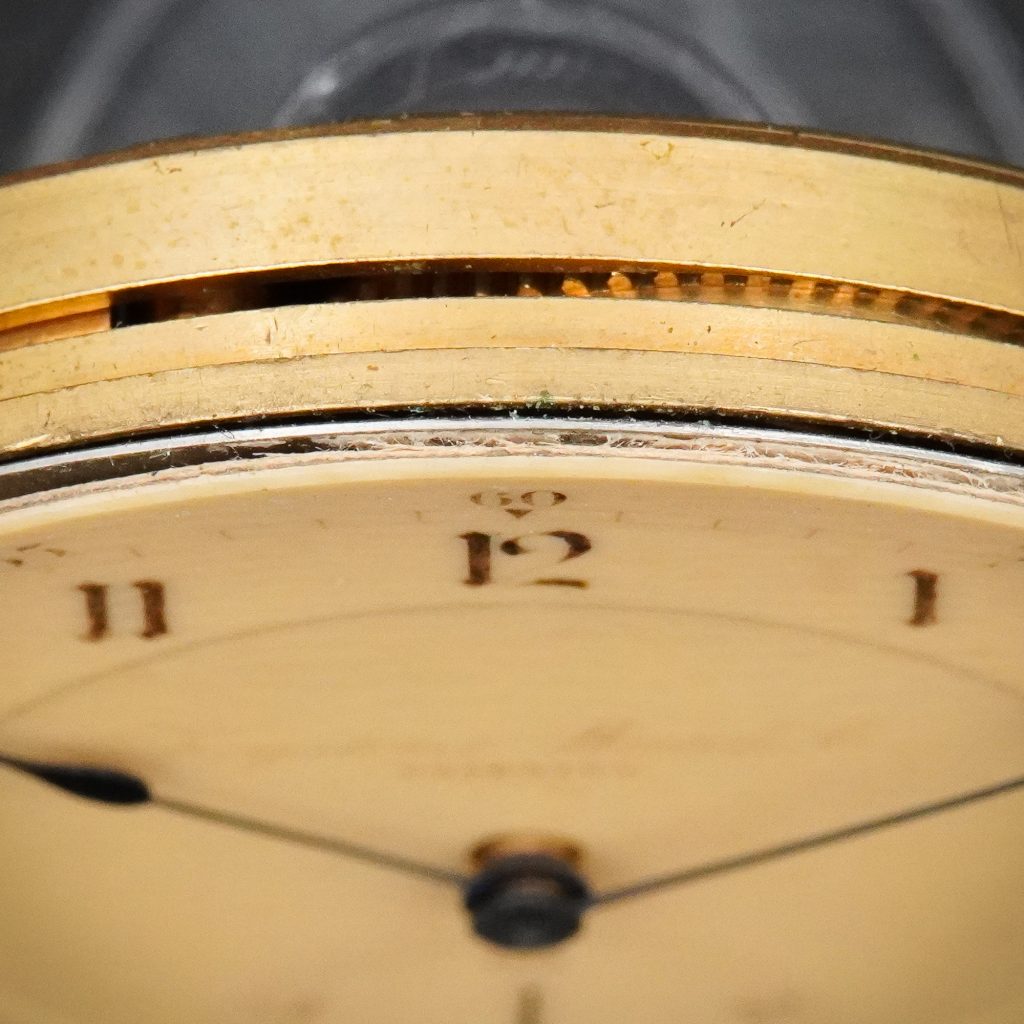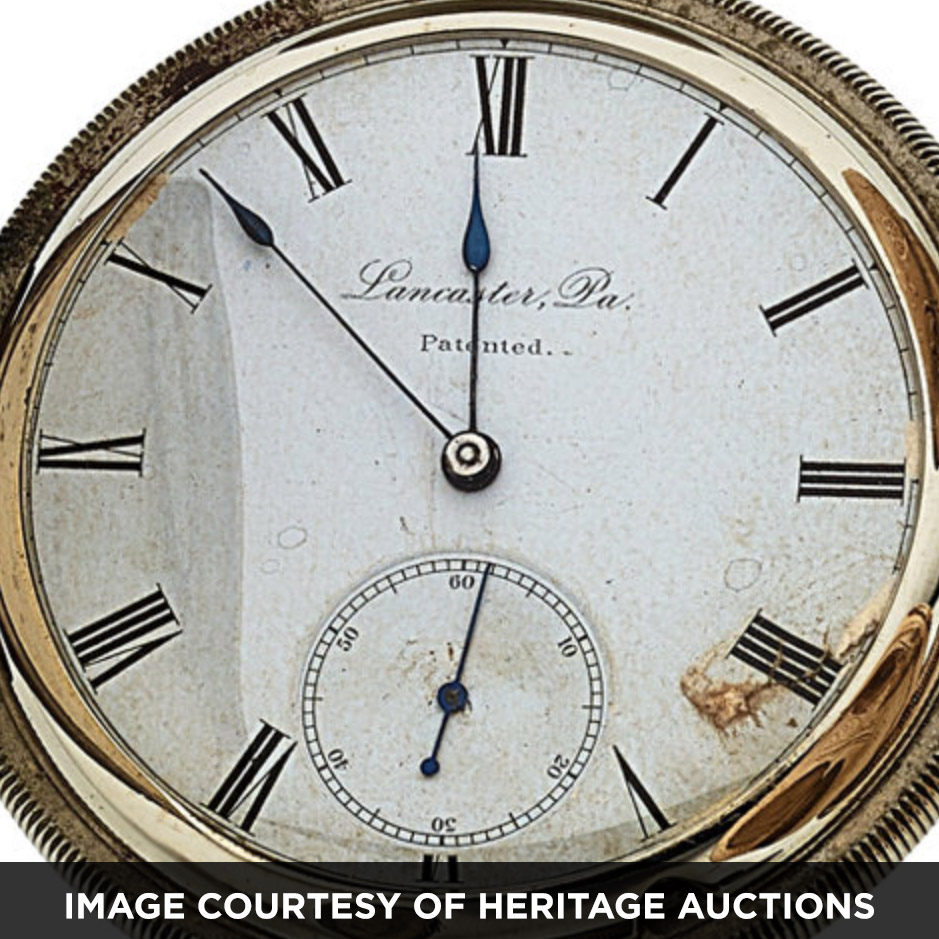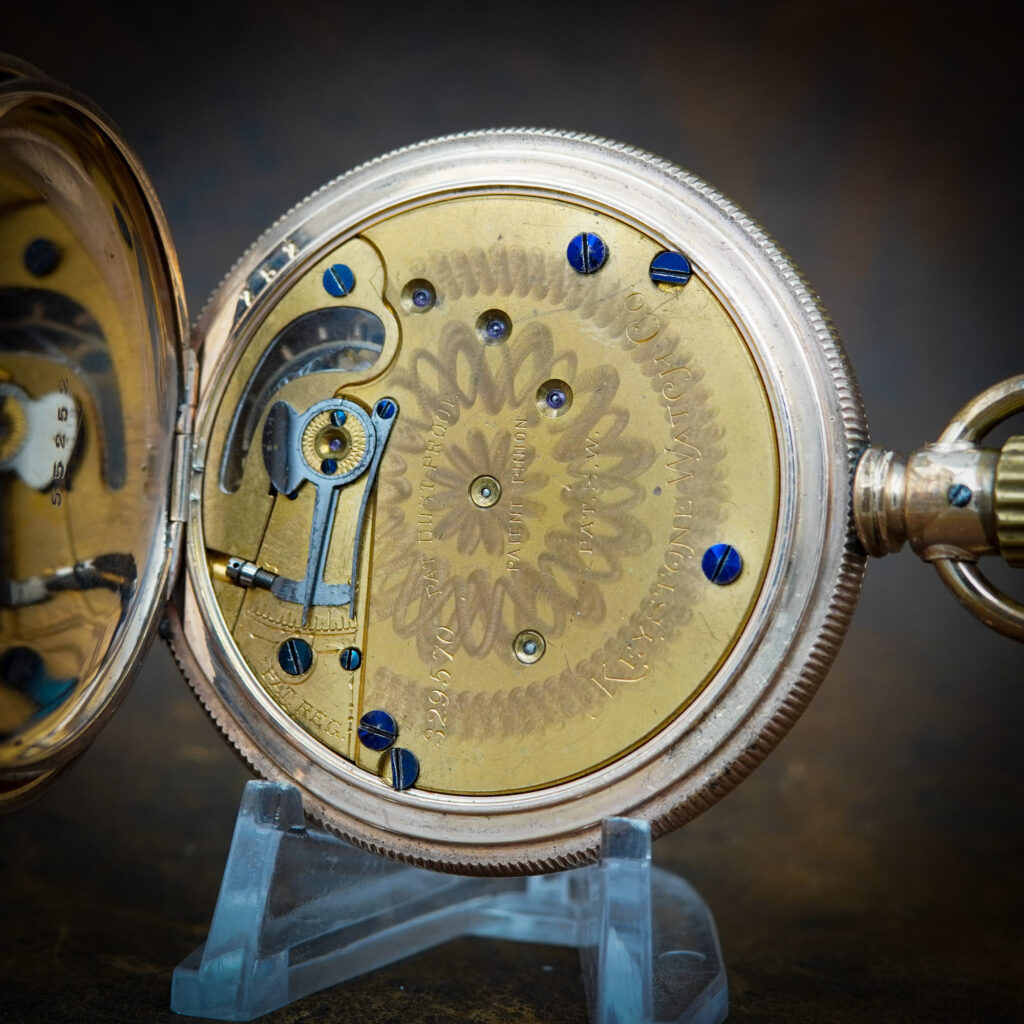
Abraham Bitner

Pictured: Patent Celluloid Watch Dial from the Keystone Watch Company with excerpt from the March 1888 issue of The Jewelers’ Circular and Horological Review. In February 1888, while Abraham Bitner.
Pictured: The Lancaster Watch Company Factory, Published in History of Lancaster County, Pennsylvania by Ellis and Evans, 1883 The accompanying image represents the Lancaster Watch Company factory as it appeared.
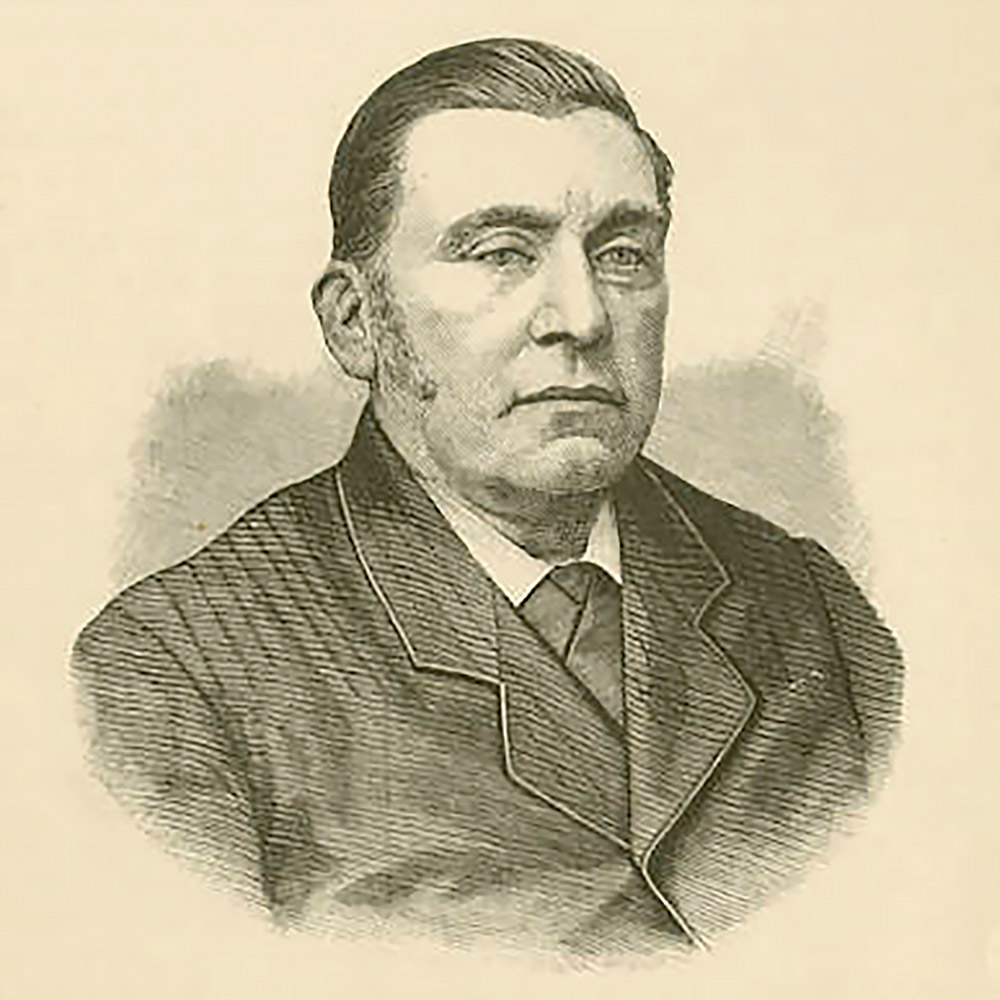
Pictured: Flat Metal Reverse of Celluloid Watch Dial from the Keystone Watch Company One of the primary claims of distinction in Abraham Bitner’s 1881 patent application for his paper dial.
Pictured: Celluloid Keystone Locomotive Watch Dial from the Keystone Watch Company Another variation of the celluloid dials produced by the Keystone Watch Company features the front of a locomotive enclosed.
Pictured: Abraham Bitner’s Patented Paper Watch Dial on a Lancaster Watch Company “Comet” Movement [Courtesy of Heritage Auctions] Before Abraham Bitner used celluloid in the late 1880s as an alternative.

